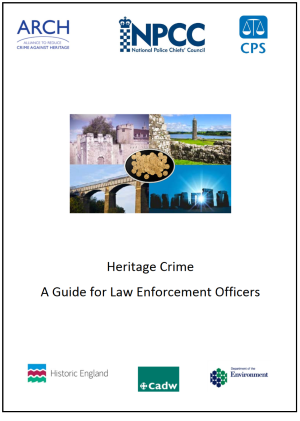 Mark Harrison, Head of Heritage Crime and Policing Advice at Historic England, has summarised the development of their Heritage Crime Programme for Ecclesiastical Heritage World.
Mark Harrison, Head of Heritage Crime and Policing Advice at Historic England, has summarised the development of their Heritage Crime Programme for Ecclesiastical Heritage World.
Mark Harrison writes in Ecclesiastical Heritage World:
Historic England defines heritage crime as: ‘Any offence which harms the value of England’s heritage assets and their settings to this and future generations.’
… In 2012, Historic England (then known as English Heritage) funded research into the extent of heritage crime. It indicated that in the previous 12 months, “18.7% of all listed buildings were physically affected by criminal activity”. The finding equates to over 70,000 listed buildings! For almost 30,000 listed buildings, the impact was classified as ‘substantial’. More generally, around 20% of listed buildings are harmed by crime every year. This figure is almost double for listed places of worship. The biggest single threat identified by the research was metal theft, in particular from church buildings with over 14% of buildings being affected.
Since 2012, the working group has made significant progress and stimulated an awareness of the existence of and the significance of protected heritage assets at a national, regional and local level. The partnership has provided law enforcement agencies, heritage practitioners and local communities with the advice, training and expertise they need to protect the historic environment from the impact of crime and anti-social behaviour…
In parallel, the Crown Prosecution Service has identified specialist prosecutors to act as Heritage and Wildlife Crime Coordinators…
The current assessment, published in July 2017, identifies seven types of crime and anti-social behaviour as the most prevalent:
- Architectural theft – in particular the theft of metal and stone
- Criminal damage – vandalism, graffiti and in particular damage caused by fire
- Unlawful metal detecting – sometimes referred to as ‘nighthawking’
- Unlawful disturbance and salvage of historic maritime sites
- Anti-social behaviour – in particular fly-tipping and off-road driving/riding
- Unauthorised works to a listed building or scheduled monument
- Illicit trade in cultural objects
As a result of the assessment’s findings the working group has launched a series of national campaigns designed to target specific heritage crime threats. These include:
- Operation Chronos – Unlawful metal detecting, sometimes referred to as ‘nighthawking’
- Operation Crucible – Theft of metal from protected historic sites and buildings and,
- Operation Birdie – Unlawful interference and salvage from historic wreck sites.
- Across the country local history and archaeological societies, sub-aqua and metal detecting clubs and Neighbourhood Watch groups (including Heritage Watch) have been encouraged to be more aware and vigilant to the threat of heritage crime. Within their local areas they report any suspicious activities to the police. Heritage Watch Schemes are now active in Kent, City of York, Hertfordshire, Essex and Cheshire.
Our understanding of the extent and scale of the problem will continue to develop…

